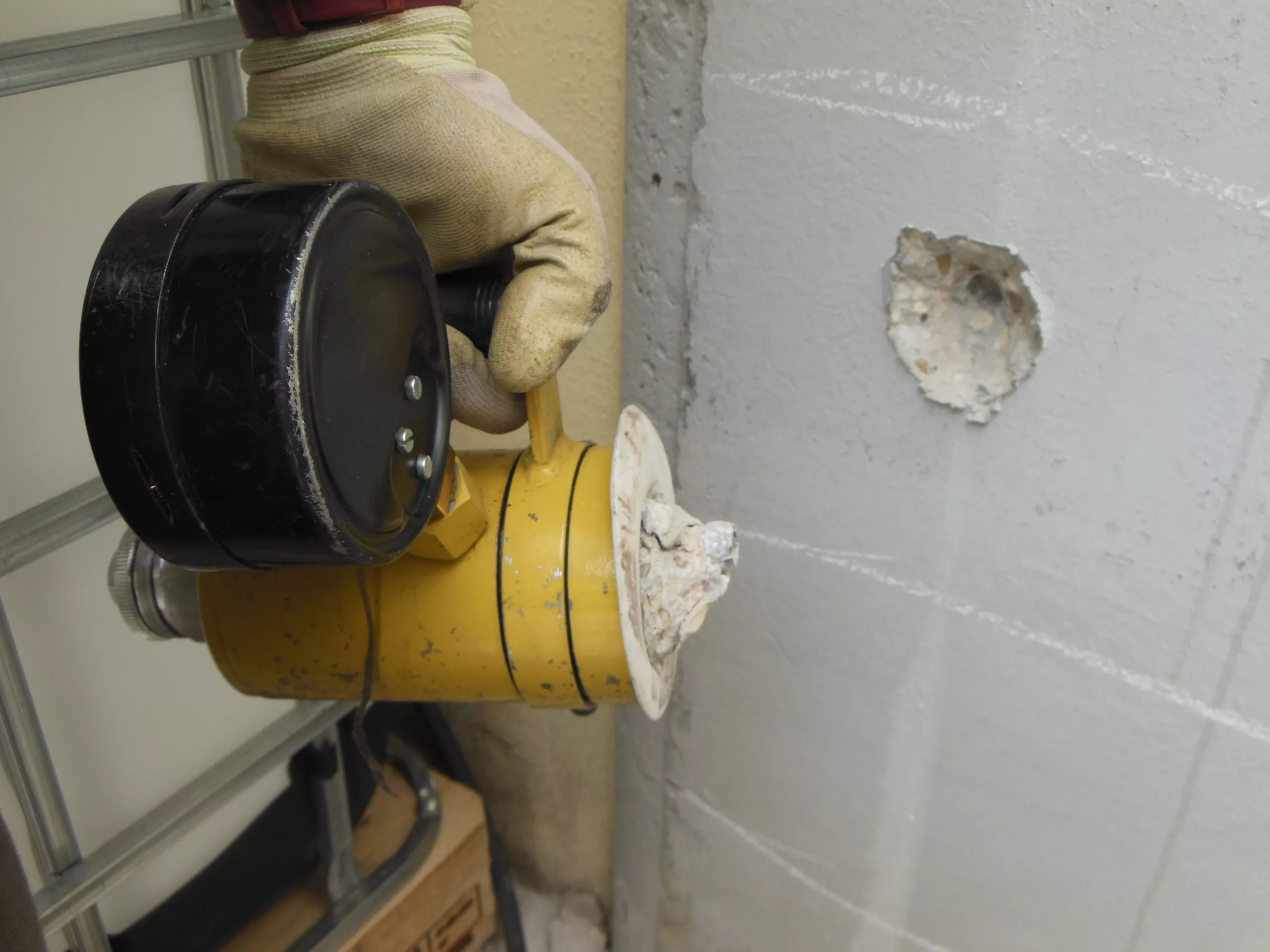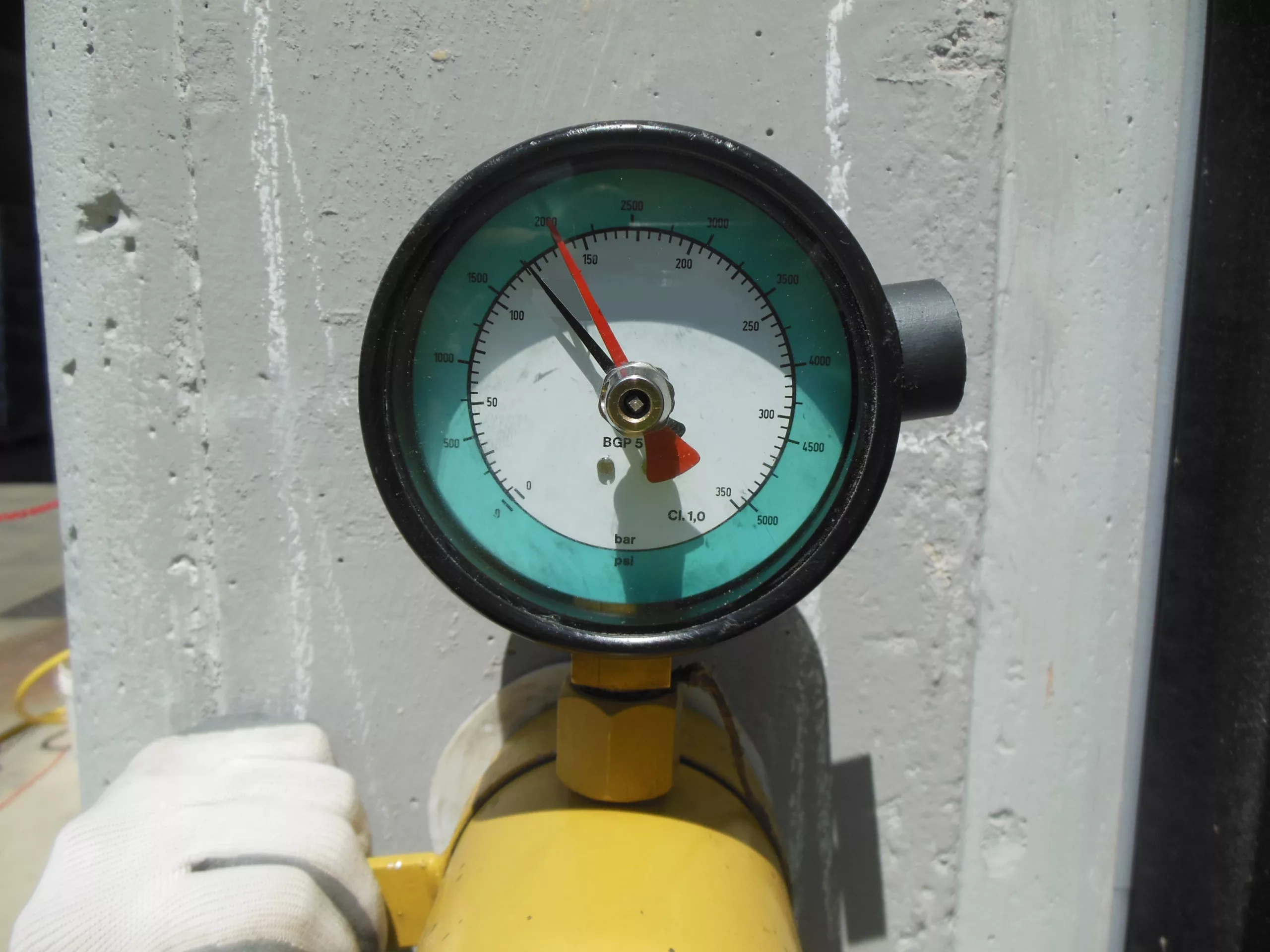


Pull-out test on concrete
The pull-out test allows to assess the average compressive strength of concrete by extracting a bar or an expansion plug that has been pre-embedded or post-inserted into the conglomerate. The plug or bar is inserted by hammering, thus allowing the internal radial part to widen for perfect adhesion to the walls.
A hydraulic jack is then applied which rests on a circular surface; the pull of the anchor causes a concrete cone to break. The force that causes the concrete to break is then correlated with the characteristic resistance of the concrete using experimental calibration curves. The pull-out test is carried out in areas without rebars, appropriately identified using a covermeter. Three pull-out tests are carried out for each area under investigation.
Reference standards: UNI EN 12504-3:2005; UNI 10157/1992.
